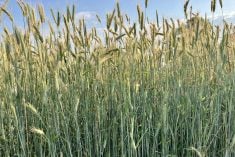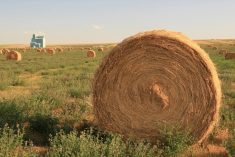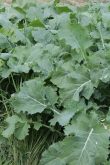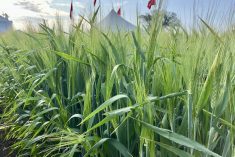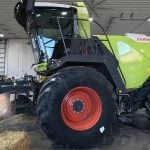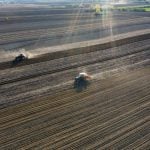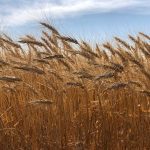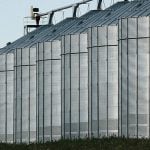When seeding forages in marginal areas, there might be a new way to do things — from the air.
Many producers have marginal land on their operations that have poor yields and are uneconomical. For years, Ducks Unlimited Canada has urged seeding those areas to perennial forages.
A recent project with drones could make that even easier. At the Saskatchewan Beef Industry Conference in January 2025, Jodie Horvath, an extension specialist at Ducks Unlimited Canada, highlighted the research. The project, looking at seeding perennial forages in marginal areas via drone, started in 2024, in collaboration with the Saskatchewan Forage Council and the University of Saskatchewan. It was part of the Agriculture Demonstration of Practices and Technologies program.
Read Also
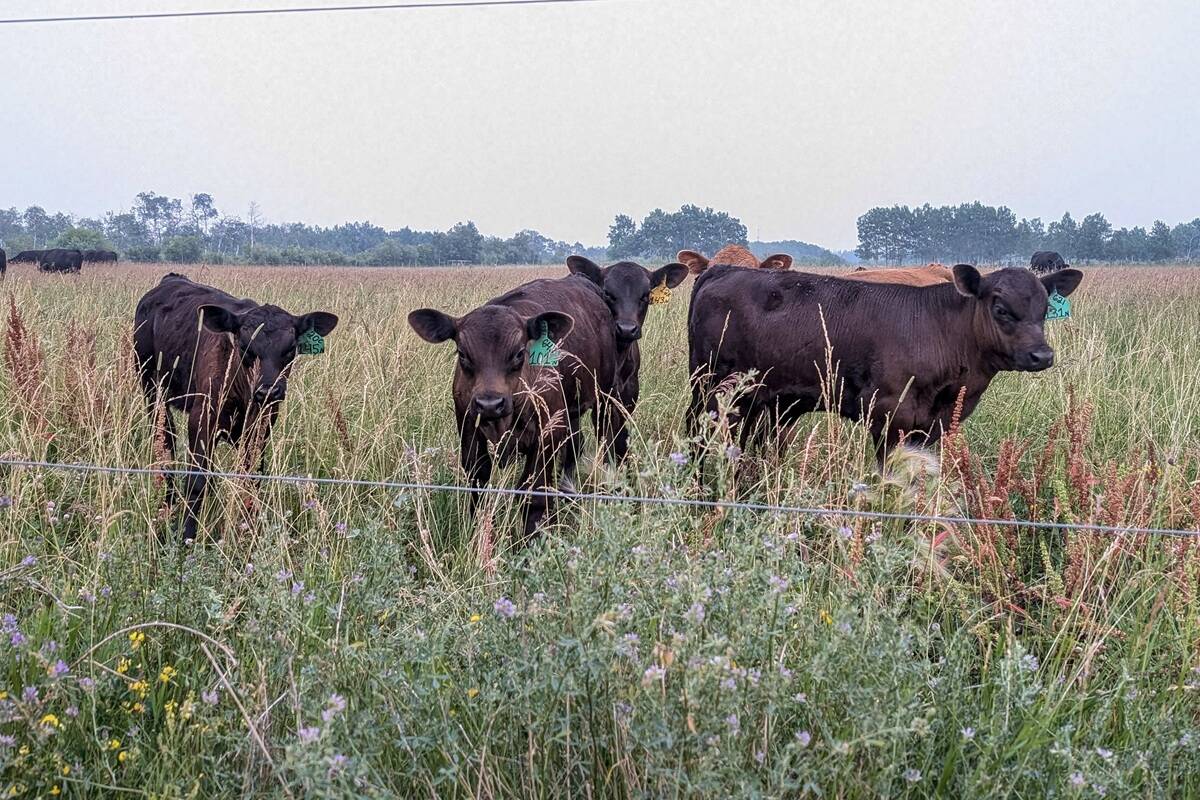
Methane-reducing solutions for beef cattle have a ways to go, say Canadian scientists
Companies developing vaccines that inhibit methane (CH4) production in cattle are facing challenges, say experts, and in the process finding their development is more complex than first thought.
Marginal areas
Seeding marginal areas is difficult at the best of times. These areas are often hard to reach, wet and prone to salinity. Seeding perennial forages benefits marginal areas, but there are many challenges associated with it.
“Marginal areas, of course, are within annual cash cropland… we see them all too often right around the buffer of a wetland,” Horvath said. “But it could be places where equipment doesn’t reach anymore. It could be something that’s cut off, that we can’t get to. And they are typically saline. They’re accumulating salts, the water table is high. So how can we get in there?”
An issue for farmers is timing. While many can see the benefit of seeding forages in marginal land, it would have to happen while they are already seeding their crops. This means dealing with marginal areas is not always a high priority.
“You’ve always got a lot on your plate in May, whether you’re a cow-calf producer or a grain producer,” Horvath said.
“It’s hard to get in there at the right time. You’re more focused on getting your crop seeded and looking after the field work.”
Seeding forages requires different equipment than seeding most cash crops, which can also deter farmers.
Despite these challenges, there are many benefits to seeding perennial forages. Perennials will reduce salinity. They also increase biodiversity, lower the water table, decrease the competitiveness of weeds, increase the amount of pollinators in the field and provide nesting areas for waterfowl.
Drones could create those positives while combatting some of the challenges.
Drone seeding
Researchers started by studying the effectiveness of drone seeding forages in marginal areas. Three locations were used — Touchwood Hills Conservation Ranch, the South East Research Farm and RJ Game Farm, all in Saskatchewan. Each site was seeded using precision-based strategies. The locations provided different climates and environments to test the technology.
“So, we went in, did the spring seedings, and then in each of these sites, we had an adjacent spot where we put greenfeed in or crop. And then we went into that same spot in the fall,” Horvath said.
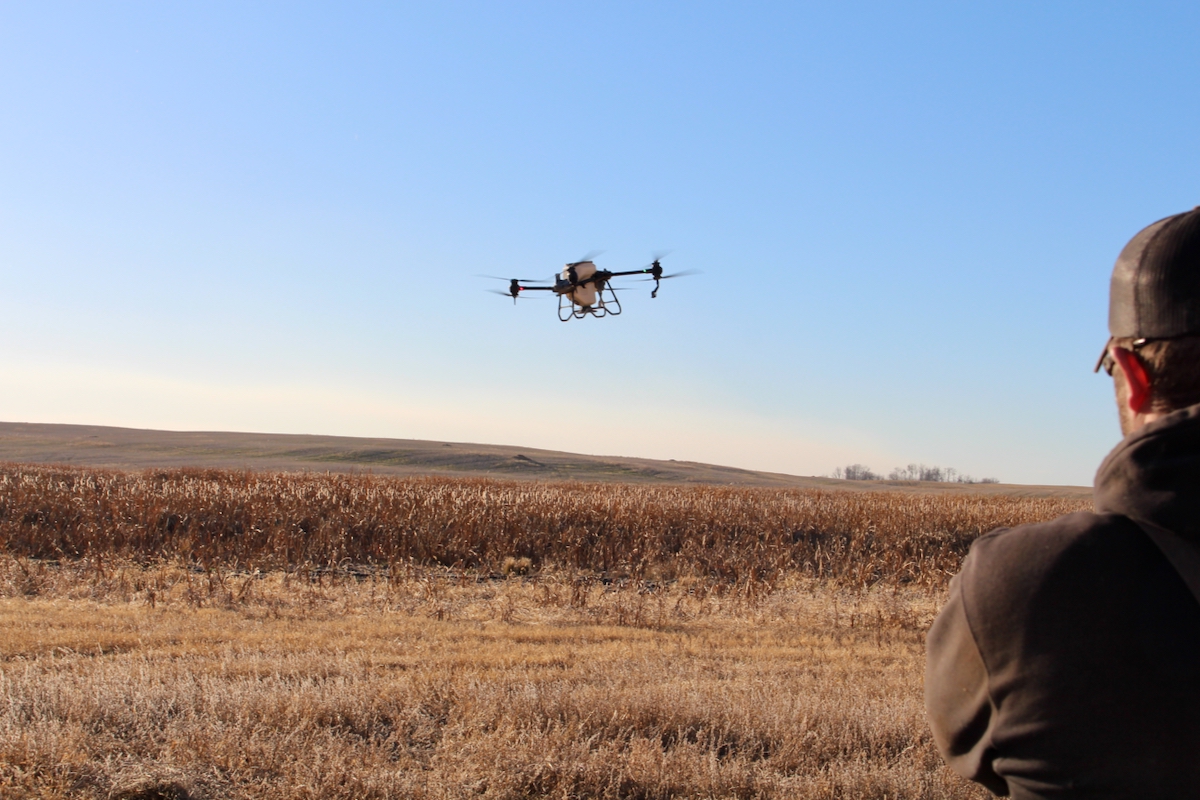
Horvath said the research was successful as everything seeded in the spring germinated well.
Because of that, Ducks Unlimited launched a program related to this research, called the Fall Dormant Seeding program.
In this program, they offered free custom seeding via drone in marginal areas. They also offered to pay farmers to seed the areas themselves. In the fall of 2024, Ducks Unlimited seeded around 500 acres of marginal land for 14 producers.
“We were really lucky last season,” Horvath said. “It was an open fall in general for most producers across the Prairies, and so we had a little bit more time to play with it, and to maybe introduce some producers to the idea of it.”
She saw many benefits to seeding with a drone. The logistics around the drone, charger, batteries and seed were also easier than she expected.
While Ducks Unlimited has been helping farmers seed marginal areas to forages for years, drones are allowing more people to get involved. Farmers who wanted to participate in the program in the past, but didn’t have time, have expressed interest in drone seeding.
Rancher perspective
Chase Waters of Pursuit Land and Cattle Service was one of the first people involved with drone seeding in the initial program.
Located near Cupar, Sask., Waters was approached by Horvath to see if he was interested in participating in the program. The piece of land drone-seeded is a low-lying alkaline area that Waters had planned to take out of grass because it gets heavily used by his cattle due to its proximity to the shipping yard.
“We’re not disturbing any topsoil,” Waters said of the drone seeding. “We’re not bringing in relatively large equipment. We can come into a small area. We’re not going to get stuck around this body of water. It’s in and out. It was all done from off the road. The operator never set foot on the property.”
They seeded in late spring. Then, all Waters had to do was harrow in the seed. He harrowed in half and left the other half. He said there was good growth last year so Waters is hopeful that will continue this spring.
He also wants to continue experimenting with the drone, around fence lines, for example. He sees potential benefits to using a drone, for either seeding or spraying, once the regulations are in place.
“When they get their set chemicals they’re allowed to use, I think we might see it take off a little bigger in pasture management, (with) noxious weeds and farmers precisely spraying areas.”
Future plans
Now that spring is approaching, Horvath said she is excited to see the germination from the fall seeding. She is hoping to get out into the field earlier this year than they did in 2024, though that depends on the weather.
“Lots more learning to be done but I’m really positive about how it’s going to play out.”
With this program taking off, Horvath is hopeful that more people will be interested in seeding their marginal areas to forages, through Ducks Unlimited or on their own. However, she recommends doing your research beforehand.
When seeding marginal areas, don’t start with the worst piece of land you have on your operation. Instead, find one that is more accessible where you are more likely to succeed. Keep in mind that if areas have high salinity, newly seeded forages won’t immediately eliminate it.
Horvath said it is also important to leave the area alone once it is seeded.
“I guess a concern of ours is that these areas get seeded but the following year, somebody comes in and sprays them out. Whether it’s just innocently not realizing because those areas are ugly… it takes two to three years to get them looking where they can sort of out-compete the other weeds.”
She recommends picking a blend appropriate for the area.
“We just are trying to find solutions for people that can make this work,” Horvath said.




